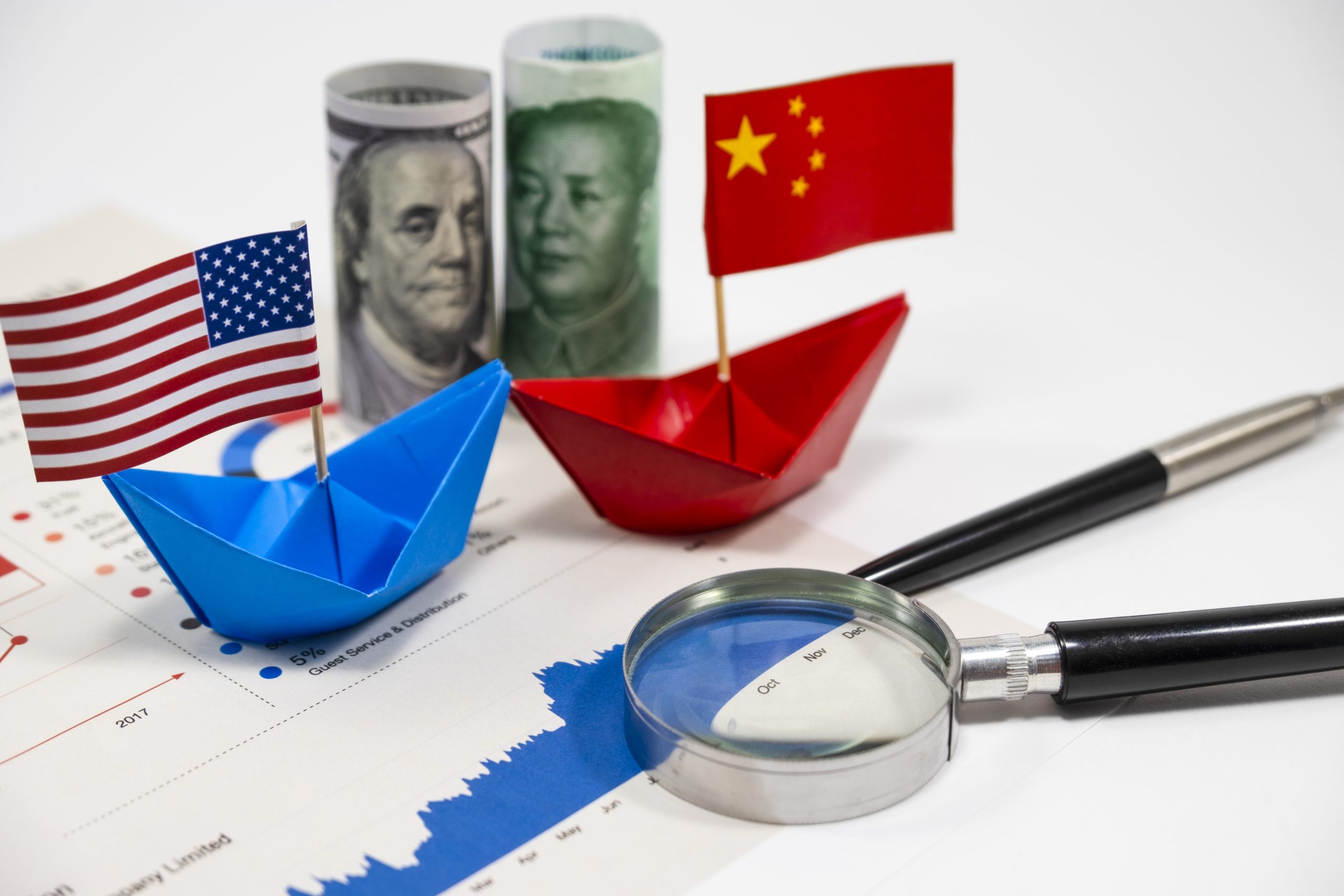Trade War’s After-Shocks On The Indian Economy- What Analysts Say
In a connected world, when economic giants fight, the whole world shakes. This was true for US-China trade war that happened in recent few years; it just exemplified the entire situation. Established early 2018 between two largest economies on earth, not only did this economic confrontation restructure their bilateral trade, but also sent shockwaves throughout global economies including India.
This trade war has had far reaching consequences with series of escalating tariffs and countermeasures which have disrupted supply chains globally as well as affected currency markets and changed global trade flows. The implications are deep and varied for India – an emerging economy with international ambitions. It has some challenges even though it creates opportunities.
Thus blog examines how US-China trade wars have affected Indian stock market and general Indian economy. By looking at how specific stocks from India responded to these tensions through broad-based economic analysis we hope to provide comprehensive view about such complex situations. This is important knowledge for traders, policy makers or anyone who wants to understand worldwide trading policies’ intersection with financial markets.
Section 1: Understanding US China Trade War
The United States (US), being world’s biggest economy by GDP size, and China – second largest economy in terms of GDP nominal – are currently engaged into what can be termed as one of history most significant commercial confrontations. Though this may seem very remote from affecting Indian share prices but before seeing its impact on them let us first know about genesis & evolution of this particularity intense rivalry between two neighbouring giants.
Origins/Evolution Of Conflict:
It started officially after America imposed duties worth billions dollars on Chinese goods citing unfair practices regarding commerce among other reasons like intellectual property theft claims against them by China back in 2018 during Trump presidency.
Escalation:
China then retaliated slapping all types of American products coming into their territory which led to series tit-for-tat trade barriers being erected. These tariffs were a departure from the cooperative trade stance held between these two economies.
Key Points:
1. Trade Imbalance:
US was keen on addressing what it termed as huge deficit vis-à-vis Beijing which they believed resulted from unbalanced commercial ties characterized with certain improprieties alleged to have been committed by China.
2. Intellectual Property (IP) And Technology Transfer Issues:
Another major bone contention had something do with claims that various US companies operating in China were forced to share their technologies with local firms thereby infringing upon patents registered under American jurisdiction while stealing others’ intellectual properties altogether.
3. National Security Worries:
There were also concerns raised over national security matters especially those touching upon tech industry telecommunications which further strained relations between them.
Major Tariffs And Economic Measures By Both Sides
1. Range Of Goods Hit:
These levies covered broad spectrum commodities ranging from steel & aluminum products used for construction purposes through consumer items such as electronics appliances among many others; thus affecting different sectors within each country’s economy.
2. Magnitude Of Duties Imposed:
Both nations slapped hundreds billions worth goods belonging to rival economies making it one biggest ever global trade wars seen recently.
Section 2: The Worldwide Economic Consequence of the Trade War
The US-China trade war had a significant impact on the world economy, affecting supply chains, international trade patterns and financial markets. This section explores some of the wider implications of this prolonged economic conflict.
Disruption of Global Trade Dynamics
1. Altered Trade Flows:
Global trade flows were significantly reshuffled by tariffs imposed by the US and China. Industries all over the world were affected as countries and companies worked to adjust their sourcing strategies and supply chains.
2. Shifts in Export-Import Patterns:
As a result of the trade war, many countries including India saw changes in their export-import patterns. Some sectors found new export opportunities while others faced challenges due to supply chain disruptions.
Impact on Global Economic Growth
1. Slowing Down of Trade:
Worldwide trade growth slowed down because of the trade war. Business investment was dampened as a result of uncertainty and increased costs arising from tariffs, which also adversely affected consumer spending in different economies.
2. Impact on Global GDP:
International Monetary Fund (IMF) and World Bank among other international organisations revised downwards their global GDP growth forecasts attributing this revision mainly to the effects of the trade war.
Effects on Financial Markets
1. Market Volatility:
During periods when there were intense developments in relation to the trade war, there was increased volatility experienced within financial markets across different parts of the globe. Each escalation or de-escalation was met with significant price movements by stock markets.
2. Investor Sentiment:
Trade war-related uncertainties had negative impacts on investor sentiment thereby resulting into shifts in investment strategies as some investors sought for safer assets.
Supply Chain Disruptions and Realignments
1. Global Supply Chain Reconfiguration:
Due to need for businesses to diversify away from reliance on US and Chinese market amidst risks mitigation, global supply chains reconfigured much faster than they could have done under different circumstances like peace times or even normal business environment.
2. Nearshoring and Diversification:
Reshoring (or nearshoring) was opted for by some companies while others diversified their supply chains to include other Asian countries such as India so as to avoid being hit hard by tariffs.
Long-Term Structural Changes
1. Trade Diversification:
Many nations have been prompted by the trade war to diversify their trade with a view of reducing overreliance on either US or China besides exploring new trade partners.
2. Changes in Global Manufacturing and Trading Hubs:
There has been a shift in terms of global manufacturing and trading hubs whereby countries like India, Vietnam and Mexico among others are emerging as alternative destinations.
The worldwide economy was severely affected by the US-China trade war which caused changes in international supply chains, financial markets and also patterns of global trade. Such economic implications have been analysed further in this section.
3. Flight to Safety:
During periods of heightened volatility, investors tended to move their investments towards safer assets such as gold or government bonds. This flight to safety further impacted the Indian stock market by reducing liquidity and increasing risk aversion.
4. Foreign Institutional Investors (FIIs):
Foreign institutional investors closely monitored developments in the US-China trade war and adjusted their portfolios accordingly. FIIs were especially sensitive to sectors directly affected by the tariffs, as well as those with significant exposure to global markets.
Conclusion
In conclusion, the US-China trade war had far-reaching effects on various aspects of the Indian economy. It created new opportunities for exports and foreign investment but also revealed weaknesses that need to be addressed for India to fully benefit from these shifts in global trade patterns. The importance of this conflict cannot be underestimated given its implications not only on India’s future position within international commerce but also its overall growth prospects moving forward.















0 Comments